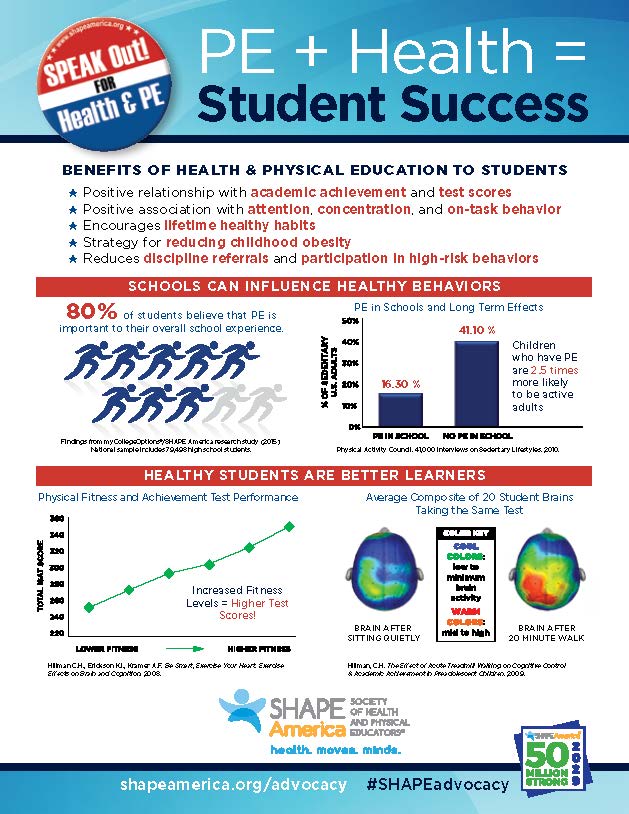Basic Fitness
![]()
Now that we’ve defined PA and exercise, how does Physical Education (PE) fit into this picture?
Physical education takes places in a educational setting and is an avenue to becoming a physically literate person. SHAPE America (Society of Health and Physical Educators) has defined a physically literate person by five standards:
| Standard 1 | The physically literate individual demonstrates competency in a variety of motor skills and movement patterns. |
| Standard 2 | The physically literate individual applies knowledge of concepts, principles, strategies and tactics related to movement and performance |
| Standard 3 | The physically literate individual demonstrates the knowledge and skills to achieve and maintain a health-enhancing level of physical activity and fitness |
| Standard 4 | The physically literate individual exhibits responsible personal and social behavior that respects self and others |
| Standard 5 | The physically literate individual recognizes the value of physical activity for health, enjoyment, challenge, self-expression and/or social interaction |

As presented in the relevance module, there are various health benefits to engaging in Physical Activity. The infographic (by SHAPE America) highlights the impact of Physical Education and Health Education on student success in K-12 setting.
The infographic and the nationally recognized standards are targeted toward K-12 students, so why is there a need for instructional PA (PE) at the university level? Read the position paper by Shape America HERE on College PA Instructional Programs.
As highlighted through the SHAPE America standards, PA is a very important aspect in becoming a more physically literate person, and is encompassed within physical education. Check out the image below to visualize the interconnection of exercise, PA, and PE.
![]() >>>Proceed to the next menu link: “Daily Living“
>>>Proceed to the next menu link: “Daily Living“

